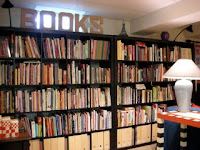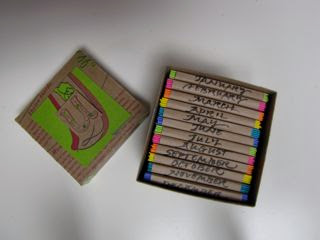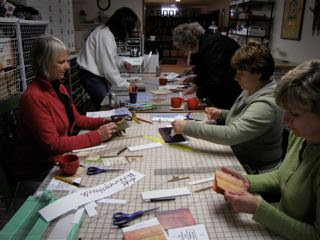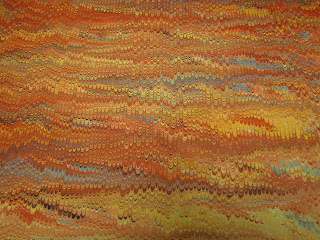



My love of books does not only encompass making them ... I also collect books about making books, books about books that have already been made, you get the picture. If I visit a bookstore, I seldom leave empty handed. Did I mention that Chicago has over 350 bookstores? When amazon announced they had located one of their distribution centers in little Munster, Indiana where I live, there was dancing in the streets. My art buddy Leslie Cefali, who also lives in northwest Indiana, and I are plotting to show up at the dock and see if there are any free samples, or maybe a big dumpster out back to dive into.
My very first book on bookbinding was Hand Bookbinding, A Manual of Instruction by Aldren A. Watson from Bell Publishing Company, printed in 1963. As a calligraphy student my first year at the Art Academy of Cincinnati, we had to make a hand lettered, bound book for the last project of the semester; Watson's book was our text for the course. I adored Watson's book. It had black and white illustrations throughout, no photographs, and included such side topics as how to letter labels and make your own tools and equipment. There was even a drawing to show you how to organize the work bench for making books!
So I made my book, lettering some lengthy poem by an author I can no longer recall, but the binding is still crystal clear in my mind. It was a case-bound, classic codex, about 6 signatures, with the case covered in a hot pink geometric mod fabric that was way cool for 1968. Because I am left handed, I had to letter the pages upside down and backwards to prevent dragging my hand through the wet ink, so little wonder that I can't recall today what it said. Maybe this is why I now make so many books without any content ... I am really all about the binding, not so much the words. Unreadable books.
In the years that followed, as a continuing student, I moved many times and both my handmade book and my beloved textbook disappeared. I mourned the loss, but I was busy with other things in my life and did not get back to making books again until the mid 1990's. In 1999, I attended Ed Hutchins' Book Arts Jamboree in upstate New York, a fantastic week long workshop that included many fun events in addition to making books. One evening there was a silent auction of artists' books and book related items. There on the auction table was a copy of Hand Bookbinding! I think I claimed it for about ten bucks; I can't tell you how happy I was to have it in my possession again! It still holds that same enchantment for me, even forty years later. Dover Publications reprinted this book in soft cover in the 1990's and it is still widely available from the usual suspects.
My resource library today has several hundred titles, and is organized into general categories. Top shelf across, fabric related books; second shelf, book binding books; third shelf, paper related crafts (surface decoration, origami, collage, and the like) and fourth shelf, miscellaneous crafts such as metal work, jewelry and polymer clay. The bottom shelf holds periodicals, organized first by publication and then by year. Not exactly the Dewey system, but it allows me to find what I need quickly.
The bookshelves and wooden magazine files are all from Ikea. A campaign desk that I bought as a college student miraculously survived my son's entire childhood and serves as a research desk. New acquisitions usually land here first for several weeks so they can be explored before joining the collection. Nearby, there is a slipcovered sofa for reading and a coffee maker. Life is good!
















